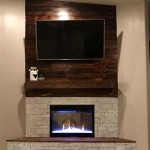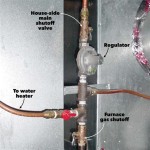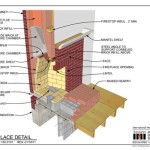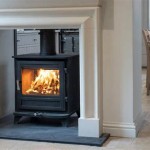How Much Does A Fireplace Cost To Install?
Installing a fireplace can add warmth, ambiance, and value to a home. However, the cost of fireplace installation can vary considerably depending on several factors. Understanding these factors is crucial for homeowners looking to budget for this home improvement project. This article will explore the various elements that influence the overall cost of fireplace installation, providing a comprehensive overview to aid in informed decision-making.
Fireplace installation costs are not fixed and depend on the type of fireplace, the complexity of the installation, and the local market conditions. The price ranges discussed throughout this article should be considered estimates and can fluctuate based on specific circumstances. Obtaining multiple quotes from qualified professionals is always recommended to ascertain accurate pricing for a particular project.
Fireplace Type and Fuel Source
The primary driver of fireplace installation cost is the type of fireplace chosen. There are several options available, each with its own set of installation requirements and associated expenses. These include wood-burning fireplaces, gas fireplaces, electric fireplaces, and fireplace inserts. The fuel source also plays a significant role, as it dictates the necessary infrastructure and permits.
Wood-Burning Fireplaces: Traditional wood-burning fireplaces are generally the most expensive to install, particularly if a chimney needs to be built or rebuilt. The installation process involves constructing a firebox, a chimney, and potentially hearth extensions. This process requires significant masonry work and adherence to strict building codes. The cost can range from $3,000 to $10,000 or even higher, depending on the size and complexity of the design. Regular maintenance, including chimney cleaning and inspections, also adds to the long-term costs.
Gas Fireplaces: Gas fireplaces offer a convenient and cleaner alternative to wood-burning models. They require a gas line connection, which may involve running pipes from the existing gas supply to the fireplace location. If a gas line is already present, the installation cost can be lower. However, if a new gas line needs to be installed, this can add significantly to the overall expense. The cost of a gas fireplace installation typically ranges from $2,500 to $8,000, including the fireplace unit and the gas line installation.
Electric Fireplaces: Electric fireplaces are the most affordable and easiest to install. They simply require a standard electrical outlet and can be placed almost anywhere in the home. No chimney or venting is needed, making them a versatile option for apartments or homes without existing fireplaces. The installation cost is typically minimal, ranging from $100 to $500, primarily covering the cost of the electric fireplace unit itself and any minor electrical work required for a dedicated circuit.
Fireplace Inserts: Fireplace inserts are designed to fit into an existing fireplace opening, offering an efficient and aesthetically pleasing upgrade. They can be wood-burning, gas, or electric. The installation process involves preparing the existing fireplace opening, connecting the insert to the appropriate fuel source (if applicable), and sealing the insert to prevent drafts. The cost of a fireplace insert installation ranges from $2,000 to $6,000, depending on the type of insert and the complexity of the installation.
Installation Complexity and Labor Costs
The complexity of the installation significantly impacts the overall cost. Factors such as the presence of existing infrastructure, the ease of access to the installation site, and the need for structural modifications can all affect the labor costs. Complex installations require more time and expertise, leading to higher labor charges.
Chimney Construction or Repair: If a chimney needs to be built or repaired, this will substantially increase the installation cost. Chimney construction involves significant masonry work, and chimney repair can require specialized skills to address issues such as cracks, leaks, or structural damage. Chimney construction can cost anywhere from $4,000 to $15,000 or more, depending on the height, materials, and complexity of the design. Chimney repair costs can range from a few hundred dollars for minor repairs to several thousand dollars for major structural repairs.
Gas Line Installation: Installing a new gas line can be a complex and costly undertaking. It involves running pipes from the existing gas meter to the fireplace location, ensuring proper sizing, and adhering to strict safety codes. The cost of gas line installation can vary depending on the distance the line needs to be run, the accessibility of the existing gas supply, and the local regulations. It is crucial to hire a licensed gas fitter for this type of work to ensure safety and compliance.
Electrical Work: Even with electric fireplaces, some electrical work may be necessary to ensure a safe and reliable power supply. This may involve installing a dedicated circuit to prevent overloading the existing electrical system. The cost of electrical work can range from a few hundred dollars for minor upgrades to several thousand dollars for extensive wiring modifications.
Permits and Inspections: Most fireplace installations require permits and inspections to ensure compliance with local building codes and safety regulations. The cost of permits can vary depending on the location and the type of fireplace being installed. Inspections are typically required before, during, and after the installation to verify that the work is being done according to code. Failing to obtain the necessary permits and inspections can result in fines and delays.
Labor Costs: Labor costs typically account for a significant portion of the overall fireplace installation cost. The hourly rate for contractors can vary depending on their experience, expertise, and the local market conditions. It is essential to obtain multiple quotes from qualified contractors to compare pricing and ensure that the contractor is licensed and insured.
Additional Costs and Considerations
Beyond the core installation costs, several additional expenses should be factored into the overall budget. These include the cost of materials, finishing work, and ongoing maintenance.
Materials: The cost of materials can vary significantly depending on the type of fireplace and the desired aesthetic. Materials for wood-burning fireplaces include brick, stone, mortar, and firebox components. Gas fireplaces require gas piping, fittings, and venting materials. Electric fireplaces primarily require the unit itself and any necessary electrical wiring. The choice of materials can significantly impact the overall cost of the project. For example, using natural stone for a fireplace surround will be more expensive than using manufactured stone or brick.
Finishing Work: Finishing work includes tasks such as installing a mantel, tiling the fireplace surround, and painting or wallpapering the surrounding walls. These finishing touches can enhance the appearance of the fireplace and integrate it seamlessly into the room's décor. The cost of finishing work can vary depending on the complexity of the design and the materials used.
Ventilation: Proper ventilation is crucial for all types of fireplaces, except for ventless electric models. Wood-burning fireplaces require a functional chimney to vent smoke and combustion gases safely. Gas fireplaces may require either a traditional chimney or direct venting through an exterior wall. Electric fireplaces do not require venting, but it is essential to ensure adequate ventilation in the room to prevent moisture buildup. The cost of ventilation systems can vary depending on the type of fireplace and the complexity of the venting requirements.
Hearth Extensions: Hearth extensions are required for wood-burning fireplaces to protect the surrounding flooring from sparks and embers. The size and material of the hearth extension are dictated by building codes and the size of the firebox. Hearth extensions can be made from brick, stone, tile, or other non-combustible materials. The cost of a hearth extension can vary depending on the size, material, and complexity of the design.
Maintenance: All types of fireplaces require regular maintenance to ensure safe and efficient operation. Wood-burning fireplaces require annual chimney cleaning and inspections to remove creosote buildup and prevent chimney fires. Gas fireplaces require periodic inspections to check for gas leaks and ensure proper functioning of the burner and venting system. Electric fireplaces require minimal maintenance, but it is essential to keep the unit clean and inspect the electrical connections regularly. Budgeting for ongoing maintenance costs is essential to ensure the long-term performance and safety of the fireplace.
By carefully considering these factors, homeowners can develop a realistic budget for fireplace installation and make informed decisions about the type of fireplace that best suits their needs and preferences. Obtaining multiple quotes from qualified professionals and researching local building codes and regulations are crucial steps in the planning process.

Fireplace Installation Cost 2025 Gas Wood Burning Electric

How Much Does A Gas Fireplace Cost Fireplaces Direct Learning Center

Gas Fireplace Installation Cost Dbs Inc

How Much Does It Cost To Put In A Fireplace Direct Fireplaces

Fireplace Installation Cost Homeowner Budgeting Guide Bob Vila

How Much Do Electric Fireplaces Cost 2025 Data Angi

Estimated Page Fireplaces Stoves Inserts Wood Gas Pellet

What Does A New Gas Fireplace Installation Cost In 2025

How Much Does Fireplace Installation Cost Alp Heating

Fireplace Vs Wood Stove Installation Costs Stamford Fireplaces
Related Posts








